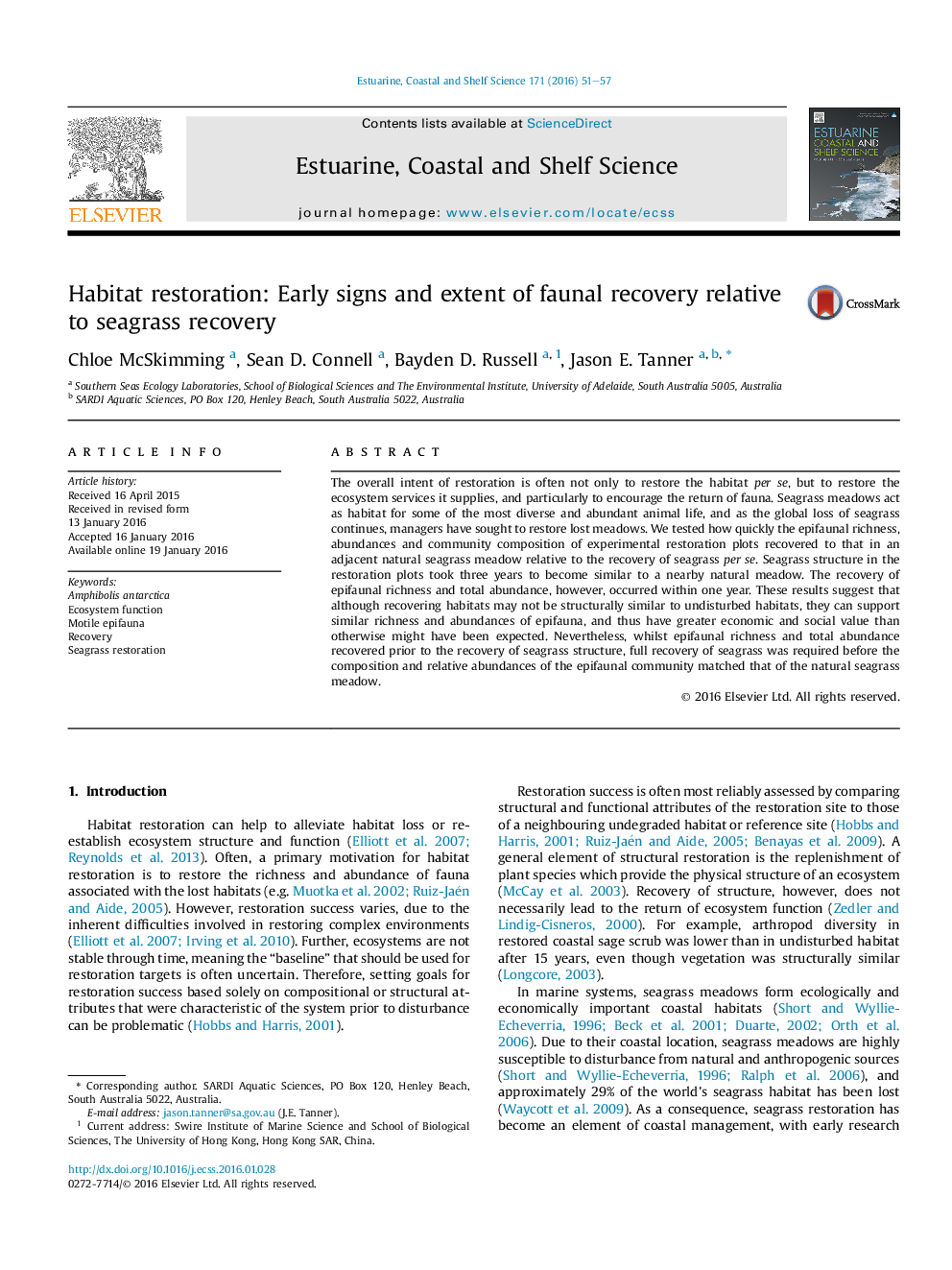| کد مقاله | کد نشریه | سال انتشار | مقاله انگلیسی | نسخه تمام متن |
|---|---|---|---|---|
| 4539281 | 1626628 | 2016 | 7 صفحه PDF | دانلود رایگان |
• Seagrass structure in restoration plots became similar to a natural meadow after 3 years.
• Faunal richness and abundances were comparable to a natural meadow after one year.
• Faunal composition did not recover until the seagrass had fully recovered after 3–5 years.
• Recovering habitats may support similar richness and abundances of fauna to undisturbed habitats.
The overall intent of restoration is often not only to restore the habitat per se, but to restore the ecosystem services it supplies, and particularly to encourage the return of fauna. Seagrass meadows act as habitat for some of the most diverse and abundant animal life, and as the global loss of seagrass continues, managers have sought to restore lost meadows. We tested how quickly the epifaunal richness, abundances and community composition of experimental restoration plots recovered to that in an adjacent natural seagrass meadow relative to the recovery of seagrass per se. Seagrass structure in the restoration plots took three years to become similar to a nearby natural meadow. The recovery of epifaunal richness and total abundance, however, occurred within one year. These results suggest that although recovering habitats may not be structurally similar to undisturbed habitats, they can support similar richness and abundances of epifauna, and thus have greater economic and social value than otherwise might have been expected. Nevertheless, whilst epifaunal richness and total abundance recovered prior to the recovery of seagrass structure, full recovery of seagrass was required before the composition and relative abundances of the epifaunal community matched that of the natural seagrass meadow.
Scatter plot of Bray–Curtis similarity measures of seagrass structure (x-axis) and epifaunal composition (y-axis) showing the convergence between all replicate samples within the three restoration plots (1, 3 and 5 years) and natural meadow (edge), to the interior of the natural meadow. Similarity coefficient = 100 if two samples are completely similar, 0 if two samples are completely dissimilar.Figure optionsDownload high-quality image (96 K)Download as PowerPoint slide
Journal: Estuarine, Coastal and Shelf Science - Volume 171, 20 March 2016, Pages 51–57
